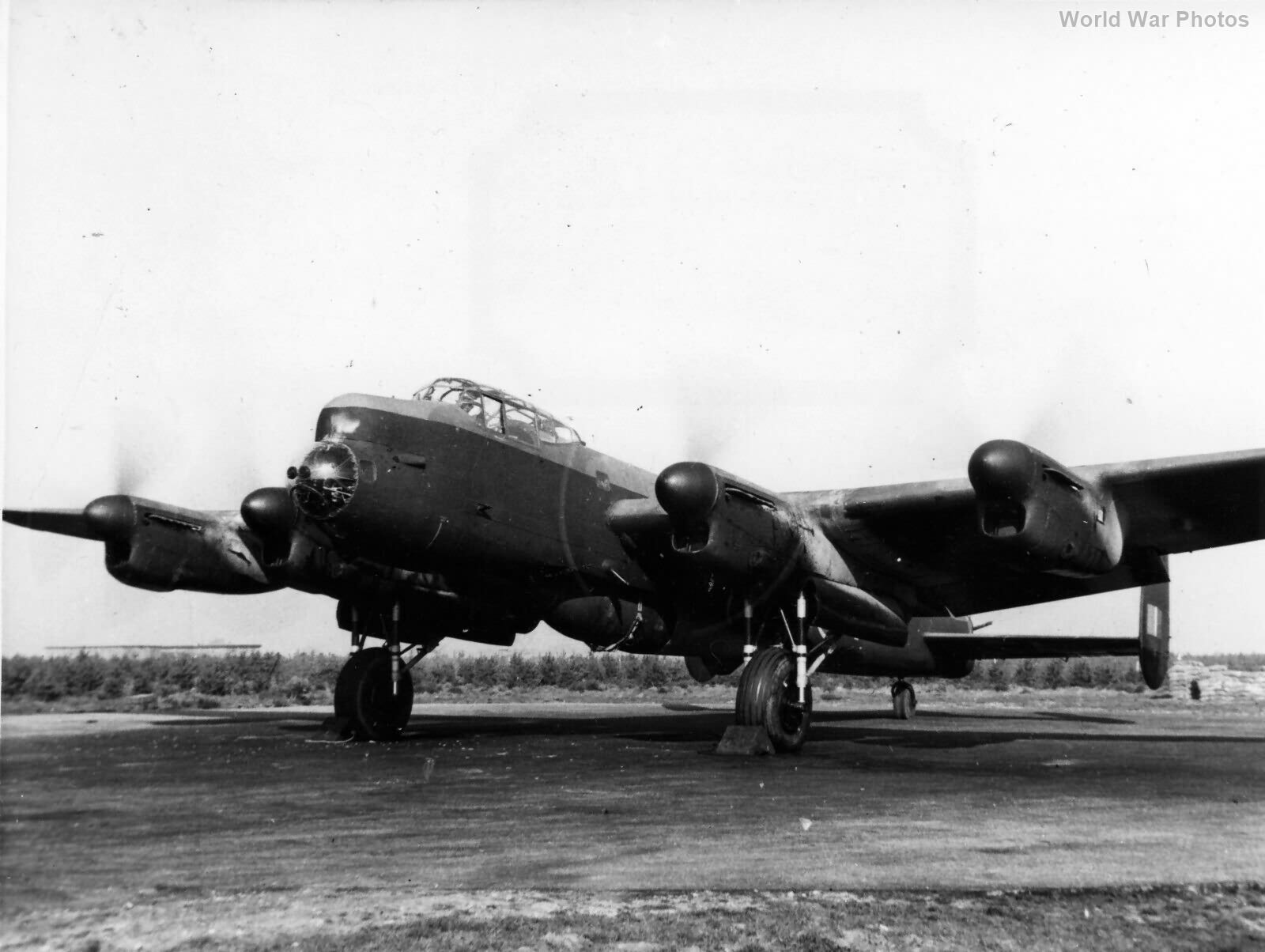In the spring of 1944, No. 617 Squadron commenced the delivery of modified Lancaster B.Mk Is, which had enlarged bomb bay doors to fit the ‘Tallboy’ bomb. Later, from March 1945, the squadron further upgraded its aircraft to be capable of carrying the ‘Grand Slam’ bomb, which necessitated the complete removal of the bomb bay doors. In February 1945, the first of 33 B.Mk I (Specials) was flown.
The weight of the ‘Grand Slam’ bomb was 22,000 lb (9980 kg), with 42% of it being made up of Torpex explosive. In comparison, the ‘Tallboy’ bomb weighed 12,000 lb (5443 kg), with 45% of it consisting of Torpex explosive.
To accommodate the massive size and weight of the 22,000lb Grand Slam bomb, significant modifications were required to the Lancaster bomber airframe:
- Bomb Bay Doors Removed: The bomb bay doors were removed entirely to accommodate the bomb’s length.
- Bomb Bay Modifications: The bomb bay itself was modified, including fairing in both ends, to securely carry the single, large weapon.
- Turret Removal: To reduce weight, the nose and mid-upper turrets were removed and faired over. Some Lancasters designated as Mark I Specials retained only the tail turret, often reduced to two .50 caliber Browning machine guns.
- Undercarriage Strengthening: The undercarriage was reinforced to handle the increased weight of the aircraft and the bomb.
- Reduced Fuel Load: The fuel load was reduced to 1,675 gallons to compensate for the Grand Slam’s weight, limiting the aircraft’s range to 1,650 miles. This reduced range did not significantly impact the Mark I Special’s operational effectiveness as Allied forces were already operating from bases in mainland Europe by the time it entered service in March 1945.
These extensive modifications highlight the extraordinary lengths engineers went to in order to enable the Lancaster to carry the Grand Slam, a testament to the bomb’s strategic importance and the Lancaster’s adaptability as a heavy bomber.
